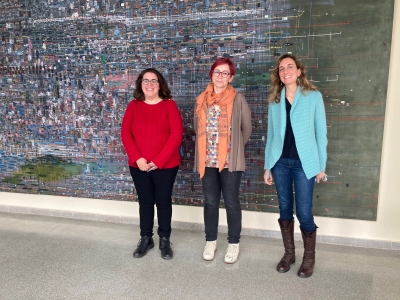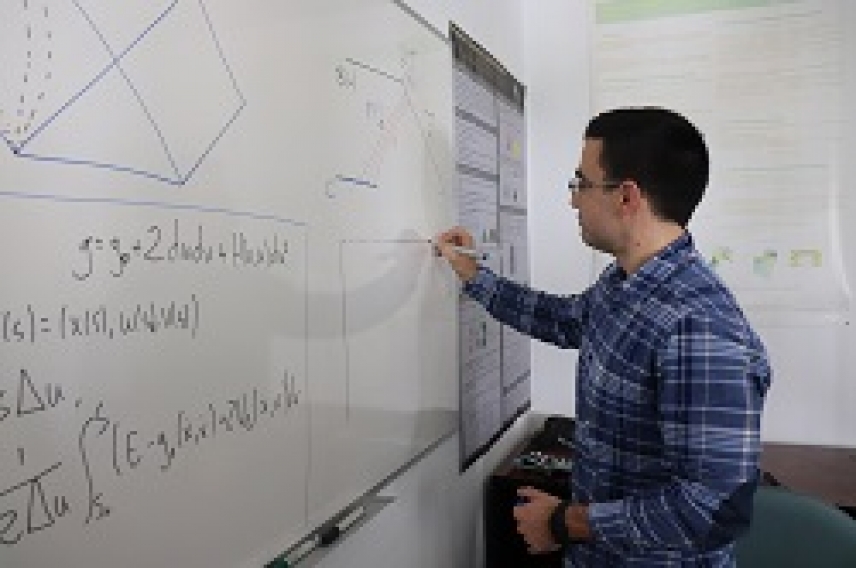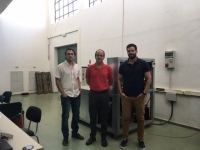PLURIMATHS PROJECT | New pedagogical materials generated to teach mathematics in foreign languages
Escrito por UCC+iThe UCO is coordinating the PLURIMATHS European project, in which universities from Italy, Belgium and the United Kingdom are participating to improve the teaching of Mathematics in multilingual and multicultural contexts
A mathematical model allows for finding black holes in regions of space where traditional methods fail to do so
Escrito por UCC+iA collaborative research project with the Universities of Cordoba and Malaga as well as the Federal University of Santa Catarina in Brazil, has developed a new formula capable of broadening the knowledge of these phenomenons
The mathematical explanation of the universe has had theoretical physics on the ropes at times. For instance, four years ago, Professor Laura Mersini-Houghton from the University of North Carolina at Chapel Hill mathematically proved the impossibility of the existence of phenomenons such as black holes. Nevertheless, gravitational waves generated by two black holes merging were detected for the first time recently (the study won the Nobel Prize in Physics in 2017).

Far from abandoning the idea of their existence, the scientific community continues to debate how to mathematically explain these phenomenons. And this search is where we can find the latest contribution realized by a team of mathematicians at the University of Cordoba (Jonatan Herrera), the University of Malaga (José Luis Flores) and the Federal University of Santa Catarina in Brazil (Ivan P. Costa e Silva). Their work was recently published in the Journal of High Energy Physics.
Herrera, Flores and Silva propose a new mathematical model that is broader than the classic approaches commonly used in Theoretical Physics, so there is an increase in the possibilities of characterizing kinds of black holes in different regions. These are analyzed by means of sophisticated mathematical models, which translates into being able to define the wide variety of possible kinds of black holes, which is not an easy task. In the last fifty years since Albert Einstein formulated his first theories on black holes, there have been many ways of translating how to mathematically understand black holes, but the novelty that this research published by these three authors presents lies in the fact that it is a general model, “broader than those in existence up to now, and therefore allows for increasing the study’s scope which lets us examine the presence of black holes in new regions,” explains Professor Herrera.
The published mathematical model, which conjugates different formulas on spacetime, is based on the idea that determining what region a black hole belongs to can be done by determining what regions of space “escape” from said black hole. What Herrera, Flores and Silva have done is define a far-off region of an “infinite light” black hole as Herrera explains, that allows for determining from what regions in space it is possible to move away as much as one wants from the center of a black hole.
Silva, IPCE; Flores, JL; Herrera, J. A novel notion of null infinity for c-boundaries and generalized black holes. JOURNAL OF HIGH ENERGY PHYSICS DOI: 10.1007/JHEP09(2018)123
Mathematical models can reduce energy consumption by refrigeration systems
Escrito por UCC+iA control-engineering research team at the University of Córdoba has developed a method which can be applied both to existing systems and in the design of new plants
Installing refrigeration systems in large areas such as department stores or buildings is no easy task. The design, construction and start-up of these systems is a time-consuming and costly process involving a large number of staff and high levels of energy consumption. A research group at the University of Córdoba has developed a method enabling refrigeration systems to function at maximum power with the lowest possible energy input. Using mathematical models, the team – led by UCO lecturer Francisco Vázquez, who holds a PhD in Physical Sciences – has devised a method for designing à la carte refrigeration systems, taking into account the atmospheric conditions and space constraints specific to any venue, thus obviating the need for purpose-built plants. Â




